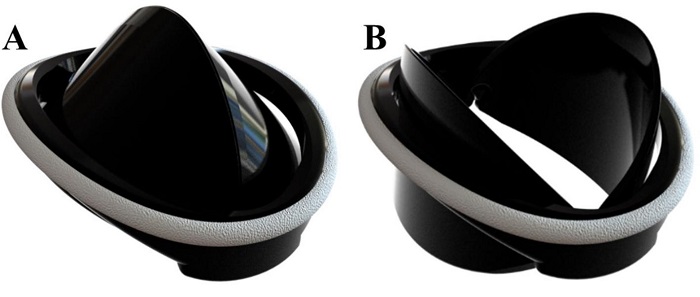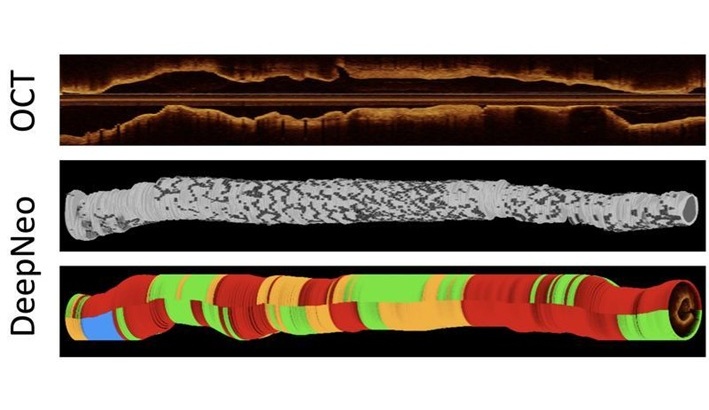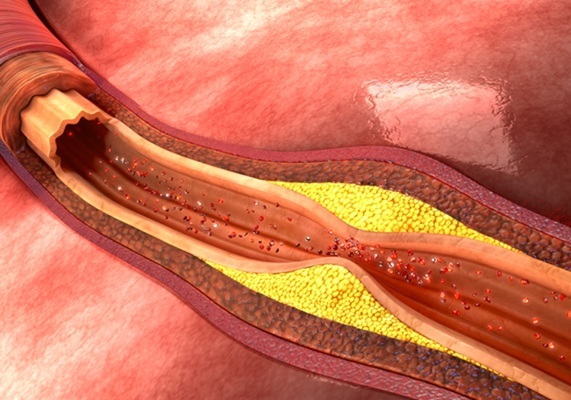Breakthrough Heart Valve Combines Best of Mechanical and Tissue Replacement Technology
|
By HospiMedica International staff writers Posted on 16 Sep 2024 |

When a patient requires a new heart valve, the existing mechanical and tissue replacements each have their own strengths and weaknesses. Tissue valves generally perform better than mechanical ones due to their shape but typically last only 15 to 20 years, necessitating another replacement in the future. Mechanical valves can last a lifetime but do not perform as effectively as tissue valves and require patients to take daily anticoagulants. Now, a team of researchers believes they have found a way to combine the advantages of both technologies in a manner that could be transformative—and life-saving—for many individuals.
A research team at UBC Okanagan (Kelowna, Canada) has developed a heart valve that merges the best features of both tissue and mechanical technologies, potentially outperforming current valves. Their latest creation called the iValve, is their most advanced to date and integrates the optimal aspects of both mechanical and tissue valves for heart valve replacement. While mechanical heart valve replacements have been in use for a long time, a persistent challenge has been perfecting the technology for the smallest hearts—those of tiny infants. What makes the iValve particularly exciting is that it is specifically designed for high-heart-rate applications, such as in pediatric patients. The new iValve could also significantly improve the quality of life for patients who currently undergo regular anticoagulant therapy—blood thinners—which can increase the risk of severe bleeding, blood clots, or damage to tissues and organs if blood flow is impeded.
This valve is engineered to allow blood to flow to the aorta, the body's largest artery and the vessel that carries oxygen-rich blood from the heart throughout the body. The researchers' next goal is to apply their findings to develop a replacement for the mitral valve, which ensures that blood flows from the left atrium to the left ventricle and prevents it from flowing backward between these two chambers. Their research has been published in the Journal of Biomechanics. Now that their prototype is performing well in mechanical laboratory tests, the researchers plan to advance to animal and clinical trials. If all goes as planned, they hope the iValve could be ready for these trials within two years.
Related Links:
UBC Okanagan
Latest Surgical Techniques News
- DNA Origami Improves Imaging of Dense Pancreatic Tissue for Cancer Detection and Treatment
- Pioneering Sutureless Coronary Bypass Technology to Eliminate Open-Chest Procedures
- Intravascular Imaging for Guiding Stent Implantation Ensures Safer Stenting Procedures
- World's First AI Surgical Guidance Platform Allows Surgeons to Measure Success in Real-Time
- AI-Generated Synthetic Scarred Hearts Aid Atrial Fibrillation Treatment
- New Class of Bioadhesives to Connect Human Tissues to Long-Term Medical Implants
- New Transcatheter Valve Found Safe and Effective for Treating Aortic Regurgitation
- Minimally Invasive Valve Repair Reduces Hospitalizations in Severe Tricuspid Regurgitation Patients
- Tiny Robotic Tools Powered by Magnetic Fields to Enable Minimally Invasive Brain Surgery
- Magnetic Tweezers Make Robotic Surgery Safer and More Precise
- AI-Powered Surgical Planning Tool Improves Pre-Op Planning
- Novel Sensing System Restores Missing Sense of Touch in Minimally Invasive Surgery
- Headset-Based AR Navigation System Improves EVD Placement
- Higher Electrode Density Improves Epilepsy Surgery by Pinpointing Where Seizures Begin
- Open-Source Tool Optimizes Placement of Visual Brain Implants
- Easy-To-Apply Gel Could Prevent Formation of Post-Surgical Abdominal Adhesions
Channels
Critical Care
view channel
AI Model Analyzes Patient Data to Diagnose Multiple Sclerosis With 90% Accuracy
Multiple sclerosis (MS) is a chronic inflammatory condition affecting the central nervous system. Most patients initially experience the relapsing-remitting form (RRMS), characterized by periods of symptom... Read more
Magnetically Navigable Microparticles Enable Targeted Drug Delivery
Abdominal aortic aneurysms (AAA) can be life-threatening if not treated and result in nearly 10,000 deaths annually. Researchers working to improve treatments for AAA could now make it possible for doctors... Read more
AI-Powered Algorithm Automates Analysis of Coronary Stents After Implantation
Every year, over three million people globally receive stents to open blocked blood vessels caused by heart disease. However, monitoring the healing process after stent implantation remains a significant challenge.... Read morePatient Care
view channel
Portable Biosensor Platform to Reduce Hospital-Acquired Infections
Approximately 4 million patients in the European Union acquire healthcare-associated infections (HAIs) or nosocomial infections each year, with around 37,000 deaths directly resulting from these infections,... Read moreFirst-Of-Its-Kind Portable Germicidal Light Technology Disinfects High-Touch Clinical Surfaces in Seconds
Reducing healthcare-acquired infections (HAIs) remains a pressing issue within global healthcare systems. In the United States alone, 1.7 million patients contract HAIs annually, leading to approximately... Read more
Surgical Capacity Optimization Solution Helps Hospitals Boost OR Utilization
An innovative solution has the capability to transform surgical capacity utilization by targeting the root cause of surgical block time inefficiencies. Fujitsu Limited’s (Tokyo, Japan) Surgical Capacity... Read more
Game-Changing Innovation in Surgical Instrument Sterilization Significantly Improves OR Throughput
A groundbreaking innovation enables hospitals to significantly improve instrument processing time and throughput in operating rooms (ORs) and sterile processing departments. Turbett Surgical, Inc.... Read moreHealth IT
view channel
Printable Molecule-Selective Nanoparticles Enable Mass Production of Wearable Biosensors
The future of medicine is likely to focus on the personalization of healthcare—understanding exactly what an individual requires and delivering the appropriate combination of nutrients, metabolites, and... Read more
Smartwatches Could Detect Congestive Heart Failure
Diagnosing congestive heart failure (CHF) typically requires expensive and time-consuming imaging techniques like echocardiography, also known as cardiac ultrasound. Previously, detecting CHF by analyzing... Read moreBusiness
view channel
Expanded Collaboration to Transform OR Technology Through AI and Automation
The expansion of an existing collaboration between three leading companies aims to develop artificial intelligence (AI)-driven solutions for smart operating rooms with sophisticated monitoring and automation.... Read more
















